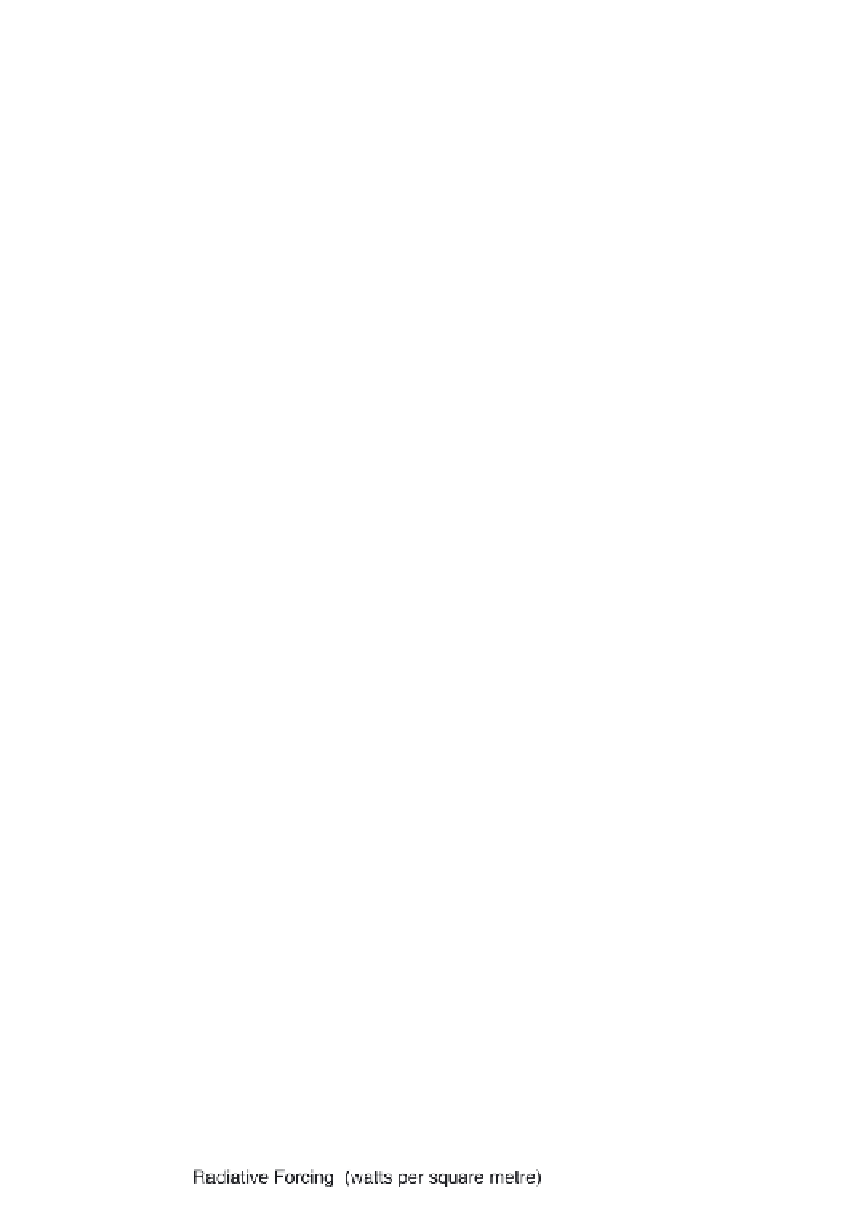Geoscience Reference
In-Depth Information
eruption of Tambora in 1815. This seriously
impacted upon societies in many parts of the
world. However, it also followed a series of cold
winters in Europe. The eruption of Krakatoa,
Indonesia, in August 1883 was recorded by
barographs around the world. Ash was propelled
up to 80km altitude. Average global temperatures
experienced a 1.2°C cooling in 1884 and the effects
persisted for 3-4 years. It appears that repeated
major eruptions are required in order for there to
be long-term climatic effects. Ice core records
provide long histories of volcanic eruptions
through the late Pleistocene and do show episodes
of more frequent eruptions.
amount by which a factor alters the radiation
balance at the top of the atmosphere and is
expressed in units of W m
-2
.
Figure 13.14
summarizes the different
components of radiative forcing in 2005 relative
to 1750. Changes in atmospheric greenhouse
gas concentrations associated with the explo-
sive growth of world population, industry and
technology have been described in Chapter 2A.2.
The largest single positive radiative forcing is from
the increased concentration of carbon dioxide
(about 1.7W m
-2
). This means that compared to
1750, the increase in carbon dioxide, considered
by itself, would lead to a radiation imbalance
of this amount. Methane (CH
4
), nitrous oxide
(N
2
O) and halocarbons together contribute about
another 1W m
-2
. Hence the total radiative forcing
from long-lived greenhouse gases (long-lived in
that they have a long residence time in the
atmosphere) is about 2.2W m
-2
. Halocarbons is
4
Anthropogenic factors
As introduced earlier, the effects of human
activities are best viewed in the framework of
global radiative forcing, which refers to the
Figure 13.14
Components of global
radiative forcing (Wm
-2
) for the year
2005, expressed as relative to the year
1750. The error bars indicate uncertainty
ranges.
Source: IPCC (2007). Reproduced by permission
of the IPCC (ch. 2, Changes in atmospheric
constituents and in radiative forcing, Report of
WG1 1, IPCC, p. 136, FAQ 2.1, fig. 2).













































































































































































